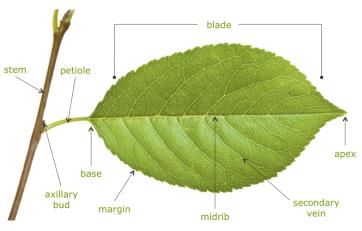NEET Exam > NEET Tests > Test: Plant Tissue - 1 - NEET MCQ
Test: Plant Tissue - 1 - NEET MCQ
Test Description
20 Questions MCQ Test - Test: Plant Tissue - 1
Test: Plant Tissue - 1 for NEET 2024 is part of NEET preparation. The Test: Plant Tissue - 1 questions and answers have been prepared
according to the NEET exam syllabus.The Test: Plant Tissue - 1 MCQs are made for NEET 2024 Exam.
Find important definitions, questions, notes, meanings, examples, exercises, MCQs and online tests for Test: Plant Tissue - 1 below.
Solutions of Test: Plant Tissue - 1 questions in English are available as part of our course for NEET & Test: Plant Tissue - 1 solutions in
Hindi for NEET course.
Download more important topics, notes, lectures and mock test series for NEET Exam by signing up for free. Attempt Test: Plant Tissue - 1 | 20 questions in 20 minutes | Mock test for NEET preparation | Free important questions MCQ to study for NEET Exam | Download free PDF with solutions
Test: Plant Tissue - 1 - Question 1
Branch of Botany which deals with the study of internal organization of plants is
Detailed Solution for Test: Plant Tissue - 1 - Question 1
Detailed Solution for Test: Plant Tissue - 1 - Question 2
| 1 Crore+ students have signed up on EduRev. Have you? Download the App |
Detailed Solution for Test: Plant Tissue - 1 - Question 3
Detailed Solution for Test: Plant Tissue - 1 - Question 4
Detailed Solution for Test: Plant Tissue - 1 - Question 5
Detailed Solution for Test: Plant Tissue - 1 - Question 6
Detailed Solution for Test: Plant Tissue - 1 - Question 7
Test: Plant Tissue - 1 - Question 8
Which among the following statements is incorrect about collenchyma?
Detailed Solution for Test: Plant Tissue - 1 - Question 8
Detailed Solution for Test: Plant Tissue - 1 - Question 9
Detailed Solution for Test: Plant Tissue - 1 - Question 10
Detailed Solution for Test: Plant Tissue - 1 - Question 11
Detailed Solution for Test: Plant Tissue - 1 - Question 12
Test: Plant Tissue - 1 - Question 13
Which among the following is incorrect about Sclerenchyma?
Detailed Solution for Test: Plant Tissue - 1 - Question 13
Detailed Solution for Test: Plant Tissue - 1 - Question 14
Detailed Solution for Test: Plant Tissue - 1 - Question 15
Test: Plant Tissue - 1 - Question 16
Which among the following is incorrect about different cells in Xylem?
Detailed Solution for Test: Plant Tissue - 1 - Question 16
Test: Plant Tissue - 1 - Question 17
Which among the following is incorrect about epidermal tissue system?
Detailed Solution for Test: Plant Tissue - 1 - Question 17
Detailed Solution for Test: Plant Tissue - 1 - Question 18
Test: Plant Tissue - 1 - Question 19
Which of the following tissues form the main bulk of storage organ
Detailed Solution for Test: Plant Tissue - 1 - Question 19
Detailed Solution for Test: Plant Tissue - 1 - Question 20
Information about Test: Plant Tissue - 1 Page
In this test you can find the Exam questions for Test: Plant Tissue - 1 solved & explained in the simplest way possible.
Besides giving Questions and answers for Test: Plant Tissue - 1, EduRev gives you an ample number of Online tests for practice
Download as PDF


















